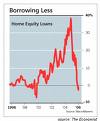2009-2010: An Economic Crossroads

The crisis of 2008-2009 exposed the U.S. financial system as being unstable, subject to abuse, and tending to favor the rich while putting everyone else deeper into debt.
The housing bubble was based on the biggest credit inflation in history. It raised the prices of homes to unprecedented levels but created the deepest recession in a generation when it collapsed. $6 trillion in wealth has now simply disappeared.
Meanwhile, unregulated global capitalism continues to concentrate wealth, outsource jobs to the cheapest possible labor markets, accelerate U.S. unemployment, and destroy local and regional economies.
Even if the recession results in a modest recovery, it is likely to be of the “jobless” variety, or else jobs at low wages, with the U.S. still the most wasteful, resource-intensive, debt-oriented economy in history. A budget for war expenditures of almost $1 trillion doesn’t help.
Steps toward recovery are being fueled by enormous increases in the national debt due to federal budget deficits now over $1.4 trillion a year, with the U.S. economy carrying a total debt load of $200,000 for every man, woman, and child in the nation.
The huge debts of government at all levels, combined with reliance on government employment as a Keynesian economic driver, have raised the total government tax and fee burden (federal/state/local) to up to 40-50% of an individual’s income.
The “elephant in the room” is the debt-based monetary system run by the Federal Reserve, which since its inception in 1913 has based the U.S. money supply almost entirely on bank lending, including lending to government for its deficits. The Federal Reserve Act gave the banking system the incredible privilege of creating money out of thin air and charging interest for its use. The federal government now pays the banking system, trust funds, and investors, including foreign governments, almost $400 billion a year just for interest.
When you add it up, interest and taxes today probably consume over half the entire U.S. gross domestic product.
Final elimination of the gold standard in 1971 removed any objective measure of the value of Federal Reserve currency. Since then, the dollar has lost 85 percent of its value. Despite the rhetoric, government and Fed policies inflate the currency in order to pay off debt with dollars of less value.
Some members of Congress are trying to rein in the Fed, but so far with little success. Numerous proposals for monetary reform are coming from all quarters, but the power of the Fed and banking system in favor of maintaining the status quo is enormous.
With the power wielded by the privileges of big banking, combined with big government and its Keynesian deficit-based financial system, we have completely forgotten that time in our history when money was viewed as a medium of exchange for producers of goods and services. Prior to 1913, the creation and use of money was much less centralized and mainly served the marketplace.
The true purpose and meaning of money was rediscovered during the Great Depression when many businesses and local jurisdictions produced their own money in the form of scrip. Scrip is actually a more stable form of currency than bank-created fiat money where people are forced to accept it as legal tender. The same goes for the use of self-generated “trading units” by trade exchanges acting as producer currency coops.
Today a similar movement has begun through the creation and use of legal alternative currencies. It may be our best immediate hope of achieving a semblance of real economic democracy and restoring local/regional economic sustainability. Proponents should also lobby government to accept alternative currencies for payment of taxes.
Richard C. Cook is a former federal government analyst who writes on public policy issues. His website is www.richardccook.com. His latest book is “We Hold These Truths: The Hope of Monetary Reform.”

